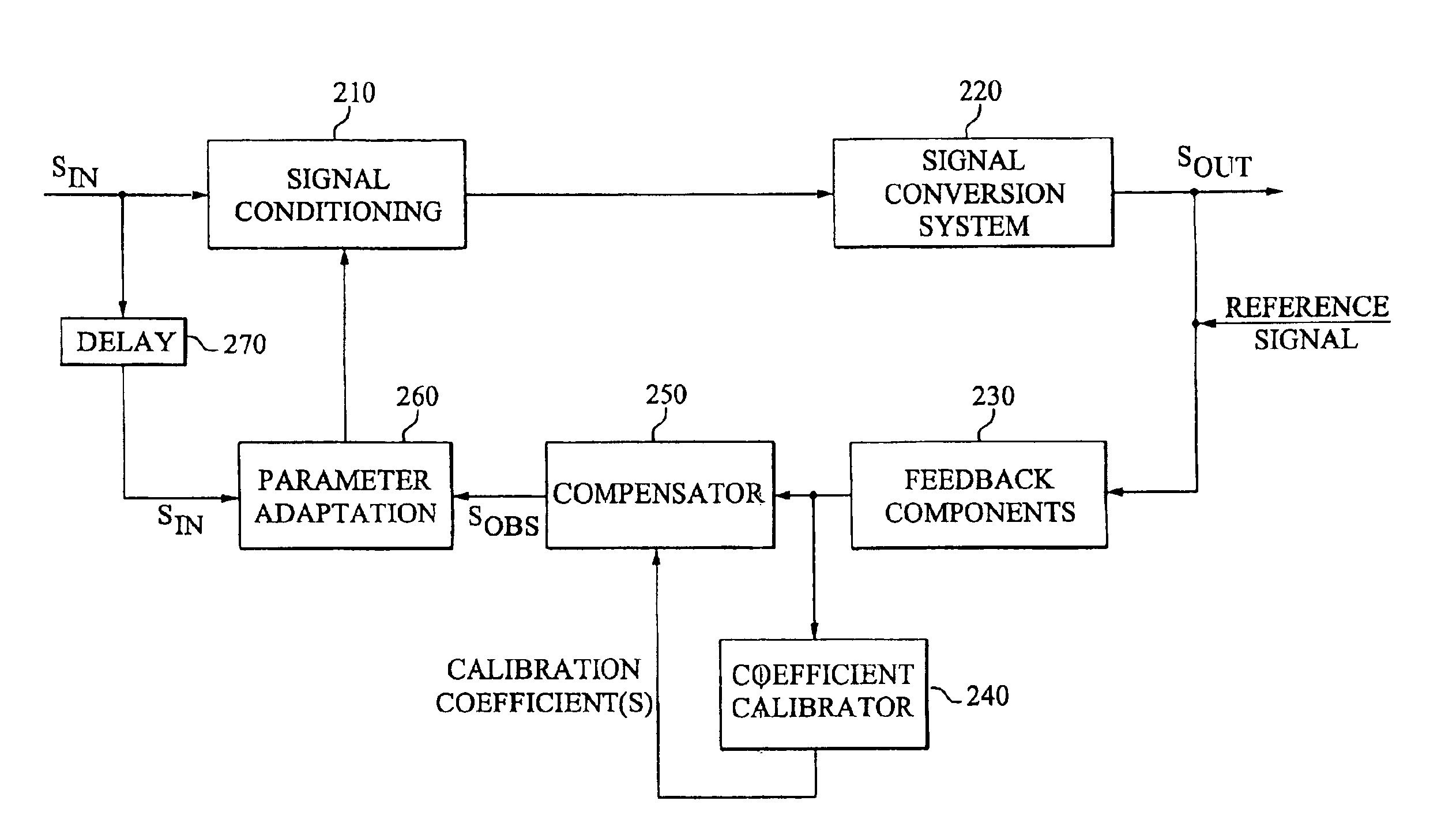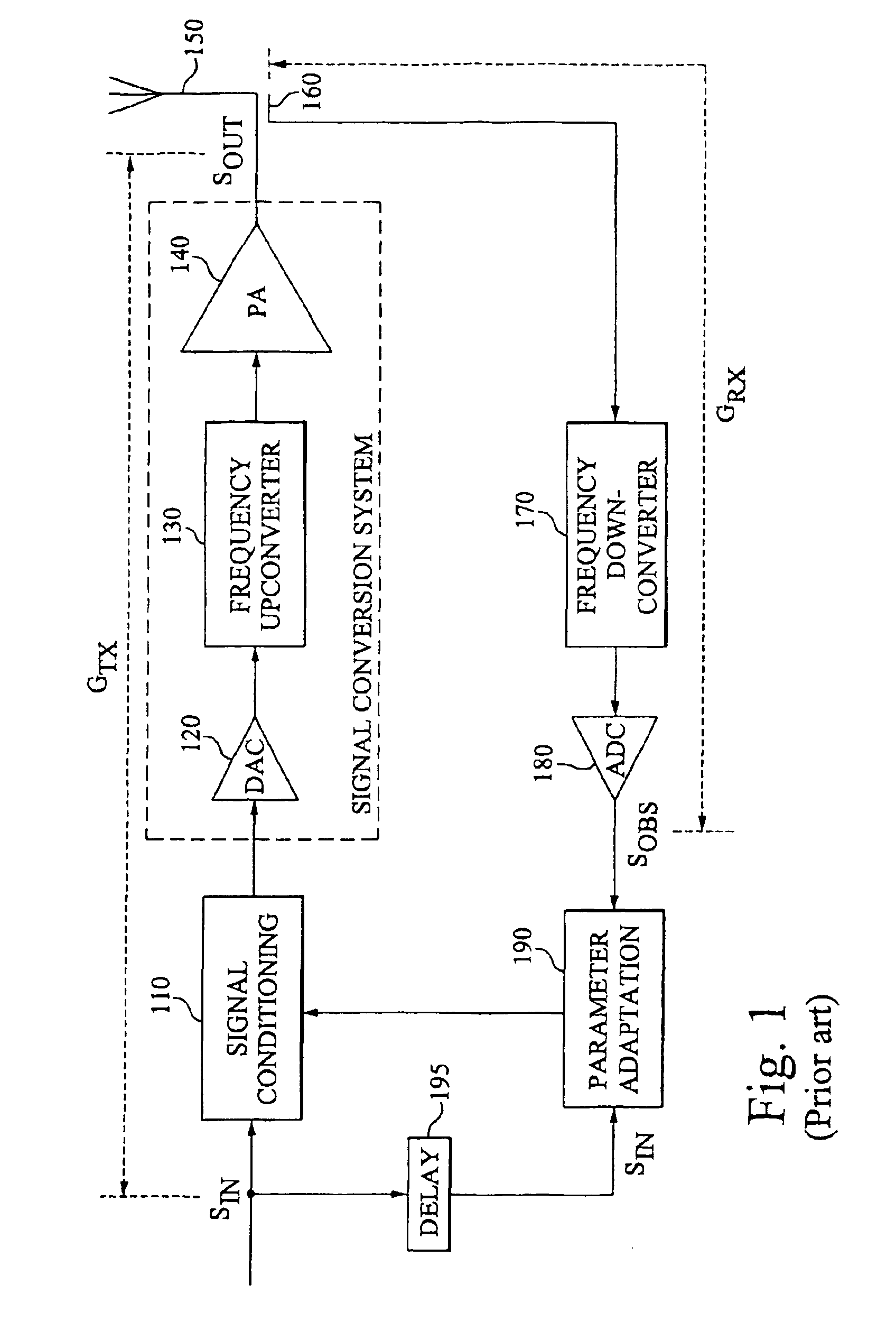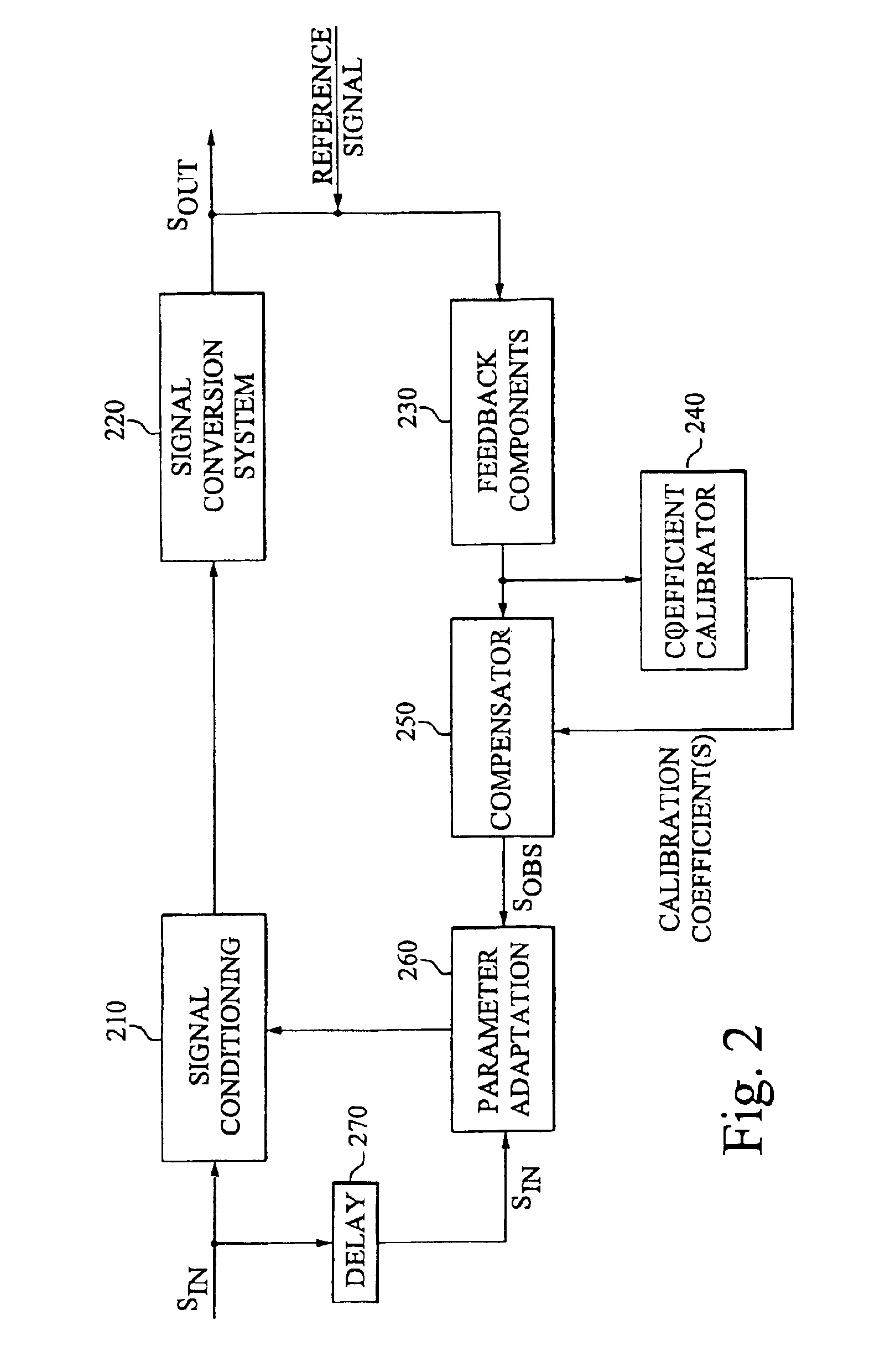Calibration of an adaptive signal conditioning system
a signal conditioning and adaptive technology, applied in the field of adaptive signal conditioning systems, can solve the problems of affecting the overall performance of the adaptive predistortion technique, dynamic changes in the transfer characteristics of the feedback path, and distortion caused by the power amplifier, so as to maintain the output power accuracy of the power amplifier system, accurate control of gain, phase and/or delay, accurate linear output response
- Summary
- Abstract
- Description
- Claims
- Application Information
AI Technical Summary
Benefits of technology
Problems solved by technology
Method used
Image
Examples
Embodiment Construction
Calibration of a General Adaptive Signal Conditioning System
[0051]FIG. 2 is a schematic block diagram illustrating a general adaptive signal conditioning system according to the invention, applied in connection with an arbitrary signal conversion system. A signal conditioning block 210 is provided in the input signal path to a signal conversion system 220 for preconditioning the signal to be converted by the signal conversion system 220. In other words, the signal conditioning block 210 receives an input signal SIN and modifies the input signal according to the particular application. The resulting modified signal is then transferred to the signal conversion system 220, which converts the modified input signal into an output signal SOUT. The signal conversion system 220 may be any signal conversion system known to the art, performing signal conversion such as amplification, attenuation, frequency conversion, phase shifting or any other filtering that affects the signal characteristi...
PUM
 Login to View More
Login to View More Abstract
Description
Claims
Application Information
 Login to View More
Login to View More - R&D
- Intellectual Property
- Life Sciences
- Materials
- Tech Scout
- Unparalleled Data Quality
- Higher Quality Content
- 60% Fewer Hallucinations
Browse by: Latest US Patents, China's latest patents, Technical Efficacy Thesaurus, Application Domain, Technology Topic, Popular Technical Reports.
© 2025 PatSnap. All rights reserved.Legal|Privacy policy|Modern Slavery Act Transparency Statement|Sitemap|About US| Contact US: help@patsnap.com



